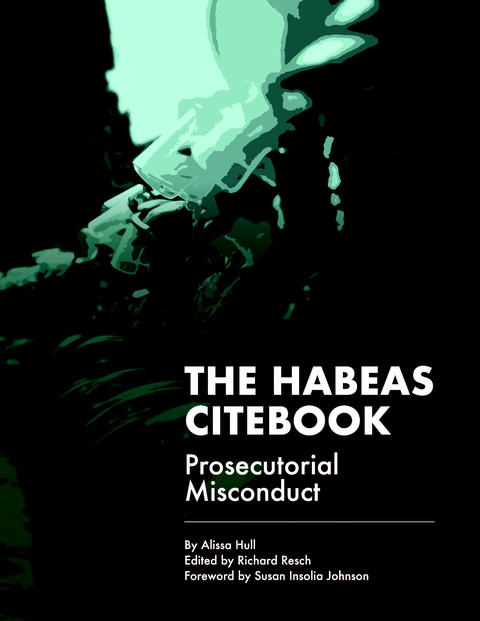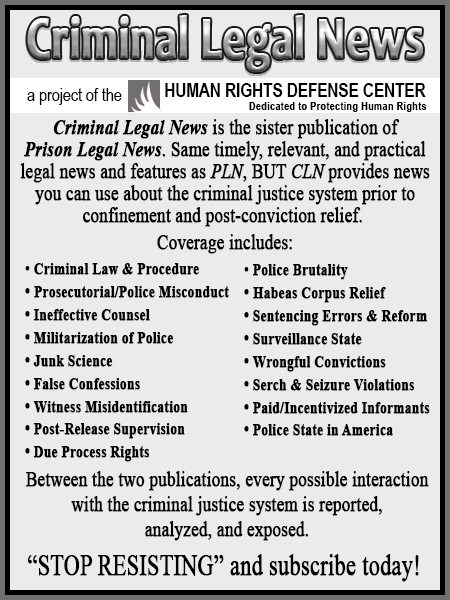Law Review Article: Plea Bargains Lack Transparency
Plea bargains are utilized to resolve 95% of all criminal cases throughout the U.S.
“Critics charge that [plea bargaining] is too coercive and leads innocent defendants to plead guilty, as it obscures the true facts in criminal cases and produces overly lenient sentences, and that it enables disparate treatment of similarly situated defendants,” the article’s introduction states. “Another feature of plea bargaining – its lack of transparency – has received less attention, but is also troubling.”
Plea bargains are opaque in nature. The negotiation stage remains off the record and closed to the public. Victims and defendants are not present, and judges are not usually privy to them. In most cases, plea offers are not publicly announced or placed on the record. “Instead, any records of plea offers typically remain in the prosecutor’s paper file (which is closed to outsiders), or in an email shared only with the defense attorney working on the case.”
“The lack of transparency in plea bargaining contrasts sharply with our longstanding legal commitment to public criminal proceedings.” The article notes that courts “frequently view the Sixth and First Amendment rights of a public criminal proceedings as coextensive.” Public trials have several purposes. They ensure fair treatment of defendants and support truth seeking, they encourage witnesses to come forward, they promote public scrutiny to assure rules are followed and the proceedings are impartial and fair, and they inform citizens about the functioning of the criminal justice system.
The Sixth Amendment’s text speaks of a defendant’s right to a public trial. Courts, however, have extended that right to a range of non-trial proceedings, including some relating to plea bargains. While courts have required disclosure of plea offers, they have refused to extend the right of public access to the plea negotiations themselves. There are several reasons for that refusal.
“The lack of transparency of plea bargaining was not the product of reasoned deliberation about its costs and benefits,” according to the article. “Rather, it reflected uncertainty about the legality and desirability of plea bargaining itself.” It was not until the 1970s that SCOTUS and state legislatures sanctioned plea bargains. As they gained acceptance, SCOTUS required courts to inquire as to the knowledge and voluntariness of the guilty pleas on the record. Many jurisdictions required a factual basis for the plea be included in the record.
One of the justifications for lack of transparency in plea bargaining negotiations is that confidentiality promotes candor amongst the parties. The reasoning is that they would be less flexible or forthcoming if they knew their positions would become public. “Publicity would be particularly problematic in high-profile cases where media coverage of the negotiations could also taint the jury pool should negotiations fall apart.”
Publicizing negotiations may also inhibit prosecutors from using their discretion to exercise mercy where the circumstances warrant it. Some say this mercy is “necessary in light of the severity of our sentencing laws and the draconian collateral consequences that may accompany criminal convictions.”
Protecting cooperating defendants from harm and retaliation is another argument for keeping plea bargains confidential. A “Survey of Harm to Cooperators” issued in 2015 by the Federal Judicial Center of 976 federal judge respondents reported “571 instances of harm or threats” to defendants and witnesses and 31 murders of cooperating defendants within the preceding three years. The plea agreement or plea supplement was the document used in at least 135 cases to identify a cooperating defendant.
Finally, some argue that documenting plea negotiations or plea offers would be time-consuming and unfeasible. It would especially be so in urban areas that process heavy caseloads and depend on quick plea bargains to resolve cases.
On the other side of the coin, the article looked at the costs of non-transparency. It “makes it difficult for attorneys, judges, and the public to monitor the process and detect when similarly situated defendants are not treated equally in the plea bargaining process.” There are studies that find racial, sexual, and ethnic disparities in the plea process. Scholars also found disparities on the basis of wealth.
The article pointed to the case of billionaire Henry Nicholas to support the position that databases are needed to promote effective representation and equal treatment of defendants. Nicholas negotiated a favorable plea in July 2019 on charges of drug possession and drug trafficking in Las Vegas. Under the plea, he was not required to serve jail time, but he would instead have “informal probation, perform 250 hours of community service, attend regular drug counseling sessions and [ ] make a $500,000 contribution to drug counseling programs in Clark County.” The contribution represented 0.0128% of his net worth.
Non-transparency can also hide ineffective assistance of counsel during plea bargaining.
SCOTUS has recognized that the right to effective assistance of counsel extends to plea bargains. Missouri v. Frye, 566 U.S. 134 (2102). Counsel is required to inform the client of any plea offer and provide competent advice about the consequences of accepting or rejecting a plea offer. Lafler v. Cooper, 566 U.S. 156 (2012).
“If offers made and concessions exchanged are not properly documented, a court reviewing an ineffective assistance claim would have a difficult time resolving, after-the-fact, whether a prosecutor did in fact extend a plea offer that the attorney failed to convey, and if so, what the terms of that differ were,” the article states.
“[T]he lack of searchable plea records inhibits proactive efforts by defense attorneys to improve the assistance they provide during plea negotiations. Without information about the standard plea for certain crimes, defense attorneys are likely to be less effective in negotiating with the prosecution.” Non-transparency prevents information being available for formulation of “reliable measures by which to develop standards for adequate representation.”
Disguising the trial penalty is another cost of non-transparency. The opaqueness of the plea process “prevents the public from understanding what trial penalties are imposed on those defendants who refuse plea offers and proceed to trial.” Studies show that defendants who proceed to trial and are convicted receive a more severe sentence than those who accept plea bargains.
The plea process can also permit parties to conceal facts in the case from the public and sometimes the court. Parties often “omit or misrepresent relevant facts” to obtain a less punitive outcome. For example, these types of deals usually are made to avoid minimum mandatory sentences, sex offender registration, or to avoid recidivism penalties or deportation. This can “deepen public mistrust and disapproval of plea bargain” because it conflicts “with a central purpose of the criminal process – to seek the truth about the case.”
Non-transparency can also undermine victims’ ability to provide input and frustrate criminal justice reform efforts. Victims are often overlooked during the plea bargaining process. The article pointed to the deal federal prosecutors made with Jeffrey Epstein, a wealthy financier charged with sexually assaulting and trafficking dozens of minor girls. His secret deal allowed him to avoid federal prosecution and netted a lenient sentence in state court. Finally, the lack of data about plea bargains “frustrates efforts toward evidence-based criminal justice reform.”
Four Transparency Proposals
The article then discusses four transparency proposals. It notes that transparency need not be an “all-or-nothing proposition.” It should consider when transparency is provided what information is available, why it is being made available, and to whom it is being revealed.
- The first proposal would require that plea agreements be in writing and on the record. It would “enhance the predictability, fairness, and public understanding of plea bargaining outcomes.” Several states already require this measure, which is “[p]erhaps the easiest and most straightforward transparency measure.” Federal Rule of Criminal Procedure 11(e)(2) requires plea agreements to be disclosed in open court, but it does not require the agreement to be in writing. Putting the agreement to writing offers “greater predictability to the parties and reduces disputes about the terms of the agreement.” It also allows “the public to better monitor plea bargaining because once a plea agreement is placed on the record, the public has a right to access it.” This measure is “not likely to impose significant costs” to the courts.
Placing plea agreements on the record can, however, increase the risk of harm to cooperating defendants. In such cases, the plea agreement or plea supplement can be sealed.
- A second measure to increase transparency is to place plea offers on the record before proceeding to trial. This requirement would ensure the defendant has been informed about the offer. It also would assist the courts in resolving claims on whether counsel provided competent representation during the plea bargaining process.
Another benefit is that the public could scrutinize the plea bargaining process more effectively. Specifically, “it would permit the public to understand the true size of the trial penalty, as the record would reflect, in the same case, the plea offer made and the disposition after trial,” the article states. “The public could then discuss and determine whether and how much defendants should be penalized for rejecting a plea offer and choosing their right to trial.”
A critique to that measure is that it may encourage improper judicial participation in plea negotiations. Judges can avoid intruding into the negotiations by not commenting on the merits of the plea offer or inquire into the reasons for it. For example, judges “may not compare the outcomes of pleading guilty to those of going to trial and may not ‘offer guidance about favorable plea agreement terms.’” They should not ask about details about discussions between counsel and the defendant.
- The third transparency proposal is to create searchable plea databases. States and the federal system could increase fairness in plea bargaining by “requiring the recording of plea offers in digital databases that are searchable and accessible to prosecutors, defense attorneys, and judges.” Those “records should include, at a minimum, the date of the offer, the terms of the offer, and the date on which it expires.”
The infrastructure is already in place for such databases, for prosecutors use databases “to manage cases, store digital evidence, and share information with the defense.” Some jurisdictions already have platforms that generate plea agreements by auto populating a template with the correct case information. These platforms could be configured to record information and allow searches of plea bargaining offers and agreements.
There are several benefits of such software. “First, it would reduce the time and effort that prosecutors expend to keep track of cases.” Such records would also improve compliance with victim consultation laws and policies.
Another benefit is the promotion of “fairness in plea bargaining by enabling participants to assess how a plea offer in one case measures against offers in similar cases.” This would enable prosecutors to assure their offers are consistent with other cases, and defense attorneys could ascertain the reasonableness of the offer. It would further strengthen monitoring of the plea process by judges.
Concerns surrounding this proposal are that it would be too time-consuming for prosecutors and defense attorneys to enter the information and that it would limit the flexibility of line prosecutors to provide leniency in deserving cases. To streamline the process, a check list could be provided to state the reasons for the offer. “If leniency is in fact deserving, prosecutors can still provide it and then simply justify their decision.”
- The final proposal to enhance transparency in plea bargaining is to strengthen judicial review of the plea process and ensure such review occurs on the record. This practice would put an end to judges handling a plea colloquy in a “rote and perfunctory” manner so long as “the defendant parrots the correct phrases.”
Rules could require courts to inquire into the terms of the agreement with the defendant to ensure the consequences of the plea are understood, ensure the defendant admitting the facts he is pleading to, and determine if counsel has adequately informed the defendant about the plea agreement. This may take more than several more minutes during the plea hearing, but it would improve oversight and assist in review of challenges to the plea bargaining process.
The article further argued for judicial participation in plea negotiations. “[W]ith the proper precautions to avoid coercive influences, judges who participate directly in the negotiations can make important contributions to the fairness and accuracy of plea bargains,” the article argues. “As a more neutral participant, judges can ensure that the interests of all affected parties – defendants, victims, and the public – are fairly considered. Their participation also enhances transparency and accountability in the process.”
“We must bring plea bargaining out of the shadows,” the article concludes.
As a digital subscriber to Criminal Legal News, you can access full text and downloads for this and other premium content.
Already a subscriber? Login





